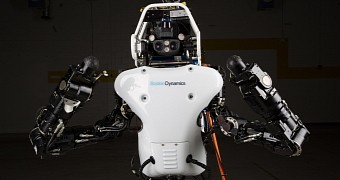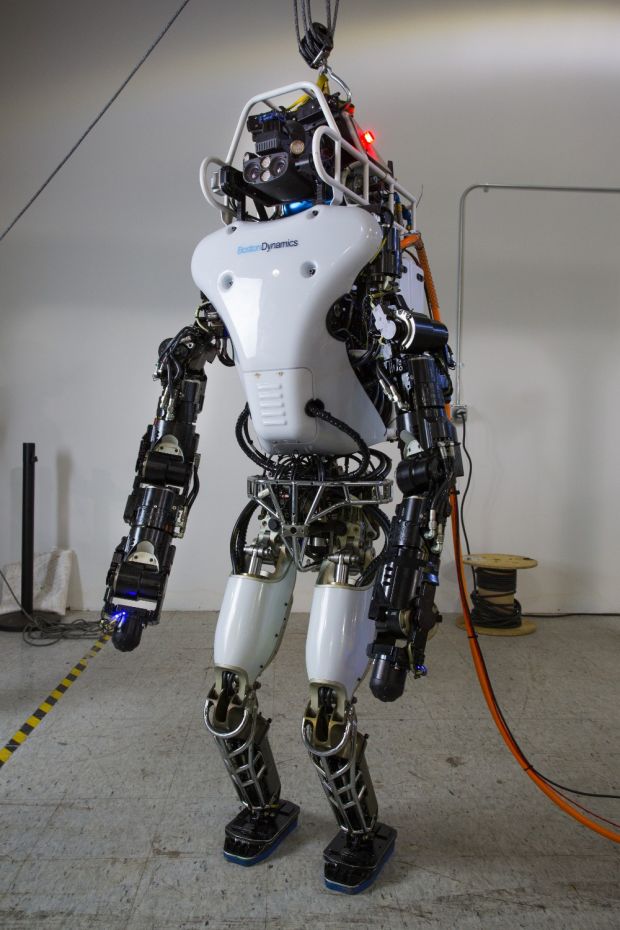The DARPA robotic challenge is a competition that always launches some of the best robot designs in the world, provided they are thoroughly and carefully enough put together. One of the possible winners of the newest contest run is the Atlas.
Atlas is a robot originally invented by Boston Dynamics under the oversight of DARPA, the United States Defense Advanced Research Projects Agency.
This robot is participating in the DARPA Robotics Challenge. It is now in the hands of a team of engineers that have been tweaking and adding to the original model for months.
Initially, the Atlas was a black and grey humanoid robot, with total focus on functionality and none on aesthetics.
Since then, DARPA has almost completely redesigned it, with only the lower legs left relatively unchanged. Since Atlas was able to navigate rough terrain and climb independently using its arms and legs from the beginning, there was no need for a full overhaul.
Indeed, if anything, the engineers were more concerned with the biggest problem of Atlas: its reliance on a power cable.
The new Atlas robot is battery-powered
Since the Atlas is primarily meant as a search and rescue robot, it can't really afford to drag a power cable after it everywhere.
Radioactive environments may not be able to harm the power coupling, but they do tend to be full of debris. Lots of places where the cable can be stuck.
That is why DARPA gave the bot a battery, specifically a 3.7kWh lithium-ion battery pack capable of running the Atlas for an hour.
During that hour, Atlas will be able to walk, balance on one leg, lift heavy weights and scan all over the place for survivors or hazards.
Immediate plans for the Atlas
Atlas bots were always going to be handed over to seven different teams for the DARPA Robotics Challenge. Diversity has served mankind well over the ages, and robotics will be no different.
The teams will have to give the Atlas abilities through hardware and software engineering, while ensuring the Atlas can always operate wirelessly (Wi-Fi covers this), recover from bumps and falls, and operate independently in case of communication blackouts.
The Atlas teams will surely have their work cut out for them, as there are other bots on the scene, though at least the S-One has been pulled from the contest ever since Google bought it.
The finale will be held in early June (June 5-6, 2015) at Fairplex in Pomona, California, and will select three winners from twenty teams.

 14 DAY TRIAL //
14 DAY TRIAL // 


